Support Village Voice News With a Donation of Your Choice.
When people think about meat, particularly those who follow a standard American diet, they think about muscle and tissue meats, such as chicken thighs, steak, and pork loin. However, meat also includes offal—the organs of butchered animals.
Organ meats are nutrient-dense, meaning they’re packed with essential nutrients like protein, iron, and vitamin B12. It’s also important to note that animal byproducts generate a large amount of waste and consuming edible parts like organ meats can help with waste reduction.
Examples of organ meats include the heart, kidneys, and liver. Organ meats are popular in other regions of the world such as Southeast Asia and Africa. They’re also common menu items in some European countries and the southern parts of the U.S.
Organ meat includes, but is not limited to, the following:
- Liver
- Heart
- Kidney
- Tongue
- Spleen
- Lungs
- Intestines
- Thymus
Keep reading to learn more about the health benefits and risks of organ meats and ways to incorporate them into a balanced diet.
Nutrition of Organ Meats
While organ meats and types of meat (e.g. beef, chicken, and lamb) vary in their nutrient content, some are particularly noteworthy.
Protein
Organ meats are rich in protein, an essential nutrient for overall health. Protein is a critical macronutrient that provides structure to the body’s tissues and organs. It’s also involved in various bodily functions such as antibody and hormonal functions.
Additionally, increased protein, when coupled with resistance exercise, promotes greater strength and muscle gains, which can help slow down the progression of age-related muscle loss or sarcopenia.
The recommended protein intake for healthy adults is 10% to 35% of calorie needs, and animal sources—including organ meats—are a good option for meeting protein requirements.
Liver in particular is high in protein. A 100-gram (3.5 ounces) serving of both beef and lamb liver provides 20.4 grams of protein while the same portion size of chicken liver offers 16.9 grams of protein. Tongue is also protein-rich with both veal and pork tongue supplying 17.2 grams of protein in a 100-gram portion.
B Vitamins
Like other animal-based foods, organ meats contain B vitamins. Vitamin B12 is an important nutrient involved in blood and nerve cell health and DNA production. The recommended daily intake for vitamin B12 is 2.4 micrograms. When it comes to high vitamin B12 sources, beef liver comes out at the top, offering 59.3 micrograms in a 100-gram portion.
Vitamin B6 is another important B vitamin involved in various bodily functions, among them, protein metabolism. The recommended daily intake for vitamin B6 is 1.6 milligrams. Beef liver provides nearly 100% of the daily value for vitamin B6, at 1.08 milligrams in a 100-gram serving. Kidney also supplies a substantial amount of vitamin B6 at 0.665 milligrams in a 100-gram serving of beef kidney, meeting about 62% of the daily value.
Minerals
Organ meats are packed with various minerals, including iron, which helps carry oxygen throughout the body, and zinc, which supports immune function and wound healing.
The recommended daily values for iron and zinc are 18 milligrams and 11 milligrams, respectively.
Liver from various animal sources offers about 5-9 milligrams of iron in a 100-gram portion, meeting about 28% to 50% of the daily value. Liver is also a good source of zinc as are kidney, tongue, and heart, providing 15% or more of the daily value in a 100-gram serving.
Choline
Choline is needed for regulating mood, memory, and muscle control. It also plays a role in early brain development and metabolism. While the liver can make a small amount of choline, most of what is obtained must come from your diet.
The recommended daily value for choline is 550 milligrams. Despite consuming choline from both food and supplements, most Americans don’t meet the recommended daily intake for choline, according to the National Institutes of Health. Many foods contain choline including animal-based foods. Beef liver, for example, provides a substantial amount of choline at 333 milligrams in a 100-gram serving, which meets 60% of the daily value.
Organ Meats vs. Muscle Meats
Both organ meats and muscle meats are nutritious, though organ meats are typically more nutrient-dense, according to research. Organ meats are the edible byproducts of butchered animals, such as tongue, liver, and kidneys. Muscle meats, on the other hand, are the types of meats that people on a Western diet are typically more familiar with, like chicken breast, beef tenderloin, and pork chops.
While there are many different types of muscle and organ meats, the following table will focus on a few key nutritional comparisons worth noting.
| Beef, eye of round roast, 100 grams | Beef liver, 100 grams | ||
| Calories | 116 | 135 | |
| Protein (grams) | 23.4 | 20.4 | |
| Iron (milligrams) | 1.37 (8% of the Daily Value or DV) | 4.9 (27% of the DV) | |
| Phosphorus (milligrams) | 222 (18% of the DV) | 387 (31% of the DV) | |
| Zinc (milligrams) | 3.38 (31% of the DV) | 4 (36% of the DV) | |
| Copper (milligrams) | 0.035 (4% of the DV) | 9.76 (1084% of the DV) | |
| Selenium (micrograms) | 22.2 (40% of the DV) | 39.7 (72% of the DV) | |
| Vitamin A (micrograms RAE) | n/a | 4970 (552% of the DV) | |
| Vitamin B6 (milligrams) | 0.638 (38% of the DV) | 1.08 (64% of the DV) | |
| Vitamin B12 (micrograms) | 2.06 (86% of the DV) | 59.3 (2471% of the DV) |
Risks of Eating Organ Meats
Although organ meats are rich in protein and nutrients, there are some potential risks worth mentioning.
High-Purine
Individuals with gout are typically advised to avoid organ meat because it’s high in purines, which are chemical compounds in food known to cause gout. Purines are broken down into uric acid, and high uric acid levels in the blood can lead to gout attacks.
Excess Vitamin A
Organ meat is also vitamin A-rich and as a fat-soluble vitamin, excess amounts get stored in the liver as opposed to excreted through urine.
Excess vitamin A can cause symptoms like headaches, nausea, and dizziness. High vitamin A is especially toxic for the unborn baby and can cause birth defects.
The tolerable upper intake level for vitamin A for adults including those who are pregnant, is 3,000 micrograms. The upper intake level is the highest daily level of a nutrient that’s likely to pose no adverse effects.
Mad Cow Disease
Mad cow disease, or bovine spongiform encephalopathy (BSE), is a progressive neurodegenerative disease that affects cattle and is fatal. Humans can get it from eating food made from a cow that had BSE.
The FDA takes steps to ensure that the U.S. food supply is safe from BSE, including prohibiting the feeding of high-risk animal parts like the brain and spinal cord to other animals. As a result, the risk of BSE in the U.S. food supply is very low.
Nonetheless, people who travel outside of the U.S. and consume organ meats should take precautions to avoid BSE exposure, such as avoiding organ meats from countries with a high risk of BSE.
Non-Alcoholic Fatty Liver Disease
A recent study involving over 15,000 participants indicated that organ meat consumption is associated with a moderately high risk of non-alcoholic fatty liver disease (NAFLD).
Although researchers note that further studies are needed to validate findings, it’s important for those at risk for NAFLD, such as people with diabetes or insulin resistance, to take precautions. It may be best to avoid organ meats.
How to Consume Organ Meat as Part of a Balanced Diet
Organ meats can be part of a balanced diet, but it’s important to consume them in moderation and incorporate a variety of other high-quality proteins like lean poultry, fish, and plant proteins. Choose high-quality organ meats with little to no processing from reputable sources. In addition, consume organ meats alongside nutrient-rich foods like whole grains, vegetables, and fruits.
It’s also important to cook organ meats thoroughly. Organ meats from beef, lamb, veal, and pork should be cooked to an internal temperature of 160 degrees Fahrenheit. Poultry organ meats should reach an internal temperature of 165 degrees Fahrenheit.
Here are some ideas for incorporating organ meats into a balanced diet:
- Add chopped liver to homemade meatballs or burgers.
- Sauté sliced liver or kidneys with vegetables like onions and bell peppers.
- Make a chicken liver paté to spread on whole grain toast.
- Grill or roast lamb heart or beef tongue and serve with roasted vegetables and grains.
- Simmer beef tripe and vegetables in a hearty soup.
Written by Johna Burdeos, RD. Medically reviewed by Simone Harounian, MS (Health.com)






![A miner works at a coal mine in Lyuliang, Shanxi province. [Photo/China News Service]](https://i0.wp.com/villagevoicenews.com/wp-content/uploads/2023/11/655ab855a3109068cb0038ea.jpeg?resize=75%2C75&ssl=1)










